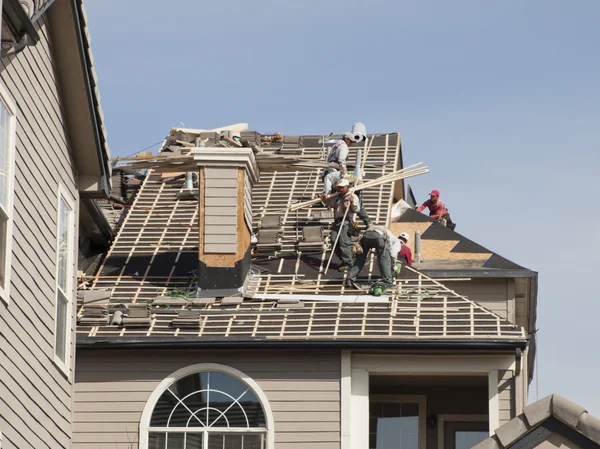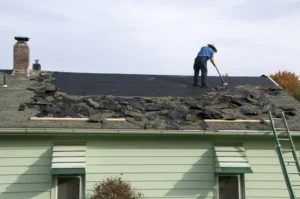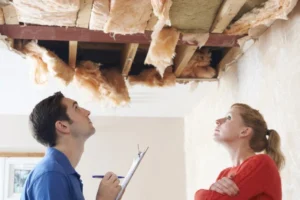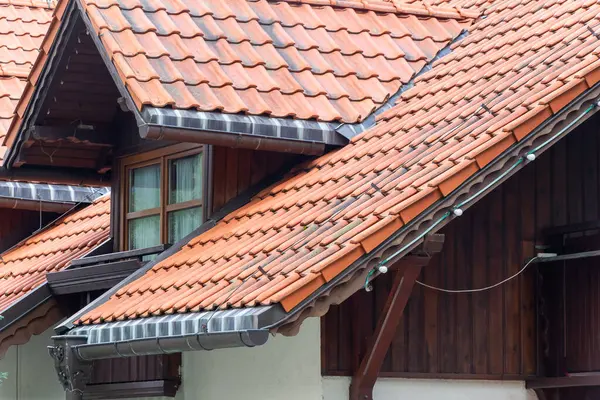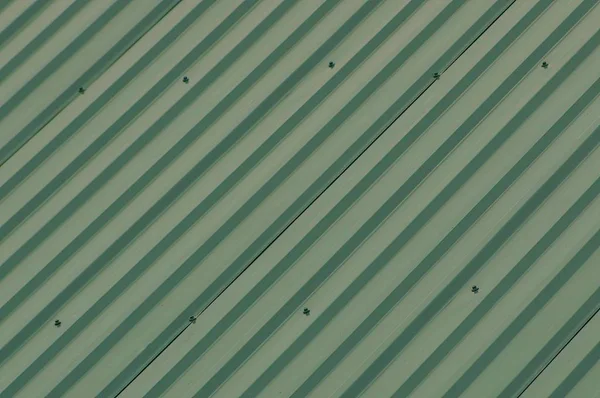Owning a home in Texas comes with unique challenges, especially when it comes to maintaining and replacing your roof. The intense sun, extreme temperatures, and frequent storms can take a toll on even the sturdiest of roofs.
Knowing how often to replace your roof and understanding the factors that influence its lifespan are crucial to maintaining your home’s structural integrity and curb appeal. In this detailed guide, we will explore how often you should replace your roof in Texas, the signs to look out for, and the best time to schedule a replacement.
Factors Affecting Roof Lifespan in Texas
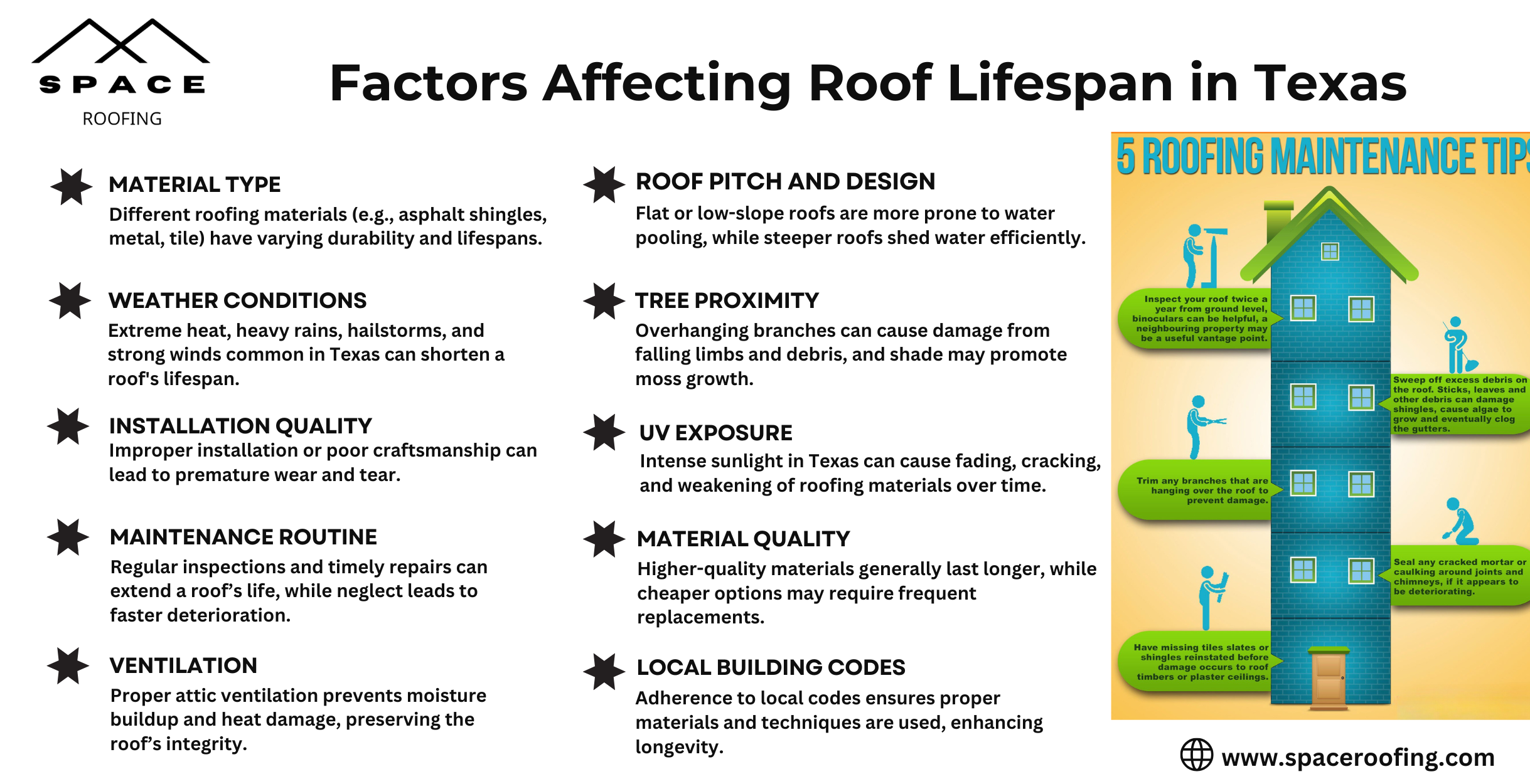
1. Type of Roof Material
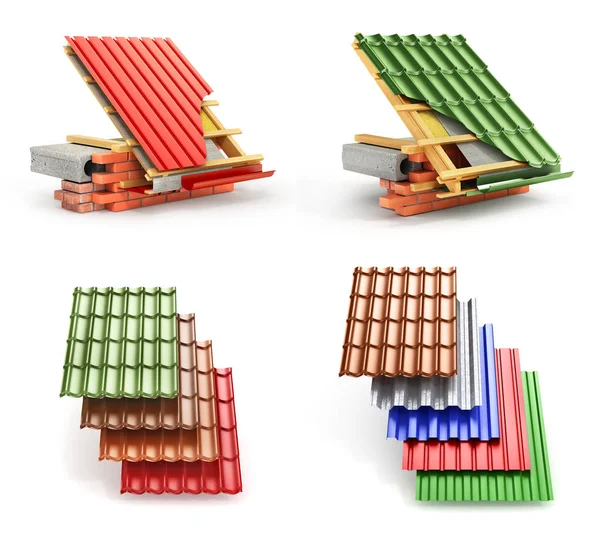
The type of roofing material you choose plays a significant role in determining how often your roof needs to be replaced. Each material has a different lifespan and performance level, which is why it’s essential to select a material that not only suits your aesthetic preferences but also withstands the Texas climate.
- Asphalt Shingles: This is the most common roofing material in Texas and across the United States due to its cost-effectiveness and versatility. However, it tends to have a shorter lifespan, typically ranging from 20 to 30 years. Factors such as direct sunlight and temperature fluctuations can cause shingles to crack or curl, leading to the need for replacement sooner than expected.
- Metal Roofs: Metal roofs are known for their durability and resistance to harsh weather conditions, making them a popular choice in Texas. They can last anywhere from 40 to 70 years with proper maintenance. However, issues such as rust or corrosion, especially in coastal areas, can necessitate early replacement.
- Tile Roofs: Tile roofs, made from materials like clay or concrete, are highly durable and can last between 50 to 100 years. They are resistant to rot and insects, making them ideal for humid climates. However, they are heavy and may require additional structural support.
- Slate Roofs: Slate roofs are among the most long-lasting roofing materials, with lifespans exceeding 100 years. Their natural stone composition makes them incredibly durable, but they are also the most expensive and require professional repair and installations.
2. Climate and Weather Conditions in Texas
Texas is known for its diverse and often extreme weather conditions. The state experiences a wide range of weather events, from scorching summer heat to intense thunderstorms, tornadoes, and even occasional snow. These climatic factors can significantly impact your roof’s lifespan.
- Heat and UV Exposure: The intense Texas sun can cause roofing materials, especially asphalt shingles, to deteriorate more rapidly. UV radiation can break down the chemical bonds in the shingles, leading to cracking and loss of protective granules.
- Storms and Hail: Texas frequently experiences severe storms and hail, which can cause immediate damage to your roof. Hailstones can crack tiles, dent metal roofs, and strip asphalt shingles of their protective granules.
- High Winds: High winds, particularly during storm season, can lift and tear shingles, leaving the roof deck exposed to water damage and leaks.
- Humidity and Moisture: High humidity levels, especially in coastal and southern Texas, can lead to mold and mildew growth on the roof, compromising its structural integrity over time.
3. Maintenance and Inspections
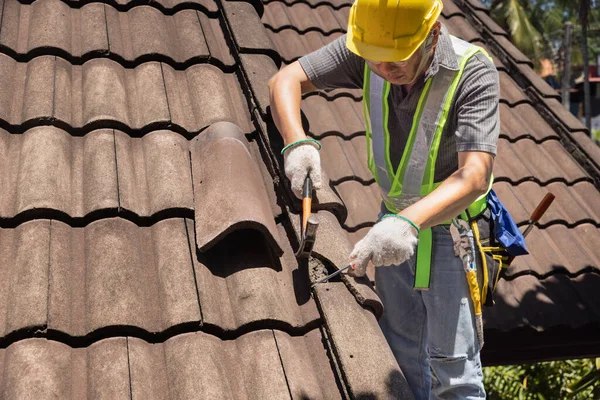
Routine maintenance and regular inspections are key to extending the lifespan of your roof. Neglecting small issues like a missing shingle or minor leak can lead to more significant problems and costly repairs or replacements.
- Regular Inspections: It’s recommended to inspect your roof at least twice a year, in the spring and fall, and after any major weather event. Look for signs of damage such as missing shingles, rusted flashing, or sagging areas.
- Minor Repairs: Address small issues as they arise. Replacing a few shingles or repairing a minor leak can prevent further damage and extend your roof’s life.
- Gutter Maintenance: Keep gutters clean and free of debris to prevent water backup, which can cause roof leaks and structural damage.
Signs That You Need to Replace Your Roof
1. Visible Damage and Leaks
Visible damage is one of the most obvious signs that your roof needs attention. This can include missing, cracked, or curled shingles, sagging areas, or even light visible through the attic ceiling. Leaks are another red flag, indicating that your roof’s protective barrier has been compromised.
- Water Stains on Ceilings and Walls: Water stains or discoloration on ceilings and walls are clear indicators of a roof leak. If left unaddressed, these leaks can lead to mold growth and structural damage.
- Cracked or Missing Shingles: Asphalt shingles can crack, curl, or go missing due to wind, hail, or age. Missing shingles expose the underlayment to the elements, increasing the risk of water damage.
- Granule Loss: If you notice granules from your shingles in the gutters or downspouts, it means your shingles are losing their protective layer, which can lead to premature aging and failure.
2. Age of the Roof
The age of your roof is a primary factor in determining whether it needs to be replaced. Knowing when your roof was installed and the type of material used can help you estimate its remaining lifespan.
- Asphalt Shingle Roofs: Most asphalt shingle roofs last between 20 to 30 years. If your roof is approaching this age, it’s time to start planning for a replacement, even if there are no visible signs of damage.
- Metal Roofs: With proper care, metal roofs can last 40 to 70 years. However, issues such as rust, corrosion, or impact damage may necessitate replacement sooner.
- Tile and Slate Roofs: These materials can last over 100 years, but individual tiles may need to be replaced periodically due to cracking or chipping.
3. Structural Issues: Sagging and Collapsing
A sagging roof is a serious concern that indicates underlying structural problems. It could be caused by water damage, a weakened roof deck, or the weight of the roofing material itself.
- Signs of Sagging: Look for visible dips or unevenness in the roofline. Sagging is often more noticeable from the street or a distance.
- Structural Damage: If your roof is sagging, it may need to be replaced immediately to prevent a collapse, which can cause severe damage to your home and pose safety risks.
How Often Should You Replace Your Roof in Texas?
1. Understanding Roof Lifespan in Texas
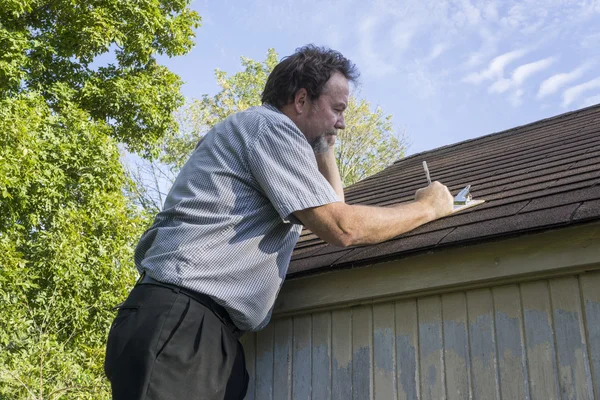
Understanding how long your roof is expected to last is essential for planning maintenance and budgeting for a replacement. The unique climate conditions in Texas can affect the lifespan of various roofing materials differently.
- Asphalt Shingles: Last about 20-30 years, but in areas with intense heat or frequent storms, this lifespan can be reduced by 5-10 years.
- Metal Roofs: Known for their longevity, metal roofs can last 40-70 years, but may need earlier replacement if exposed to salt air or frequent hailstorms.
- Tile Roofs: With a lifespan of 50-100 years, tile roofs are highly durable but may require replacement or repair of individual tiles.
- Slate Roofs: Slate can last over 100 years, making it one of the longest-lasting materials available, but it requires a solid structural foundation.
2. Guidelines for Different Roof Types
Different roof materials have varying lifespans, and each has specific replacement guidelines. Understanding these guidelines helps homeowners make informed decisions about roof replacement.
- Asphalt Shingles: Check for curling, cracking, and missing shingles every 10-15 years. Plan for a full replacement every 20-30 years.
- Metal Roofs: Inspect for rust and seal joints annually. Replace if significant rust or damage is found.
- Tile and Slate Roofs: Inspect for cracked or broken tiles every few years. Replace individual tiles as needed, and consider full replacement if widespread damage is present.
3. Frequency of Roof Replacement After Severe Weather
Severe weather events are common in Texas and can cause significant roof damage. After such events, it’s crucial to have your roof inspected and consider replacement if the damage is extensive.
- Hail and Wind Damage: Hailstones can crack shingles and tiles, while high winds can lift and tear shingles. Even if damage seems minor, it can worsen over time.
- Insurance Claims: Document all visible damage and keep records of inspections and repairs. Many insurance policies cover roof replacement after severe weather damage.
When is the Best Time to Replace Your Roof in Texas?
1. Seasonal Considerations for Roof Replacement
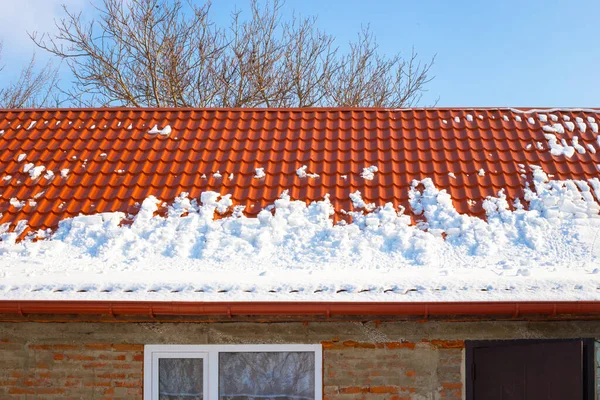
Timing your roof replacement correctly can save you money and hassle. Each season has its pros and cons for roof work in Texas.
- Spring and Fall: These are the best times for roof replacement in Texas. The weather is mild, making it easier for roofing contractors to work efficiently.
- Summer: While summer is a busy time for roofing due to dry weather, extreme heat can make it challenging and potentially dangerous for workers. It can also affect the installation process.
- Winter: Winter can be a good time for roof replacement, especially in mild winters, but cold snaps and ice can cause delays and increase costs.
2. Cost and Availability of Roofing Contractors
The cost and availability of roofing contractors can vary significantly depending on the season and demand. Planning your roof replacement during the off-season can help you save money and secure a reliable contractor.
- Off-Season Discounts: Many contractors offer lower rates during slower months like winter and early spring. You may also be able to schedule work faster during these periods.
- High Demand Seasons: Summer and post-storm periods often see a surge in demand for roofing services, leading to higher prices and longer wait times.
How to Extend the Life of Your Roof
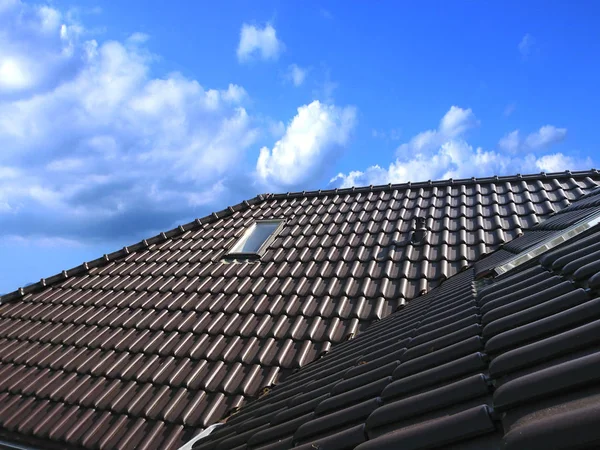
1. Regular Inspections and Preventative Maintenance
Regular inspections and preventative maintenance are the best ways to extend the life of your roof. By catching problems early, you can avoid costly repairs or the need for premature replacement.
- Bi-Annual Inspections: Have your roof inspected in the spring and fall to catch issues like missing shingles, cracked tiles, or rusting metal before they lead to more serious damage.
- Gutter Maintenance: Clogged gutters can cause water to back up onto the roof, leading to leaks and structural damage. Clean your gutters regularly, especially in the fall when leaves are abundant.
- Remove Debris: Leaves, branches, and other debris can trap moisture and cause rot. Keep your roof and gutters clear to prevent water buildup.
2. Immediate Repairs and Proactive Solutions
Addressing minor issues immediately can prevent them from becoming major problems. Proactive solutions, such as applying sealant to flashing or replacing damaged shingles, can add years to your roof’s lifespan.
- Fix Leaks Promptly: Even a small leak can cause significant damage over time. Repair leaks as soon as you notice them to prevent mold growth and structural damage.
- Replace Damaged Shingles: Missing or broken shingles can allow water to penetrate the underlayment, leading to rot and leaks. Replace any damaged shingles promptly.
- Professional Inspections: Have a professional inspect your roof at least once a year or after major weather events to catch any hidden issues.
Conclusion
Regular roof replacement and maintenance are essential to protecting your home and investment. Understanding the factors that affect your roof’s lifespan and scheduling timely replacements can help you avoid costly repairs and ensure your home remains safe and sound.
For expert advice and professional roof replacement services in Texas, contact Space Roofing at (469) 397-4600 or email us at info@spaceroofing.com. Our team is here to help you maintain and protect your home with quality roofing solutions.
FAQs
How often should you replace your roof in Texas?
You should replace your roof in Texas every 20-30 years for asphalt shingles, 40-70 years for metal roofs, and up to 100 years for tile or slate roofs.
What are the signs that a roof needs to be replaced?
Signs that a roof needs to be replaced include visible damage, leaks, sagging areas, and a roof age exceeding its expected lifespan.
What is the best time of year to replace a roof in Texas?
The best time of year to replace a roof in Texas is in the spring or fall, when the weather is mild and contractors are more available.
How often should you inspect your roof in Texas?
You should inspect your roof in Texas at least twice a year, in the spring and fall, and after major storms.
Can roof maintenance extend its lifespan?
Yes, regular maintenance, including bi-annual inspections, cleaning gutters, and addressing minor repairs promptly, can significantly extend a roof’s lifespan, preventing costly replacements and ensuring structural integrity.

